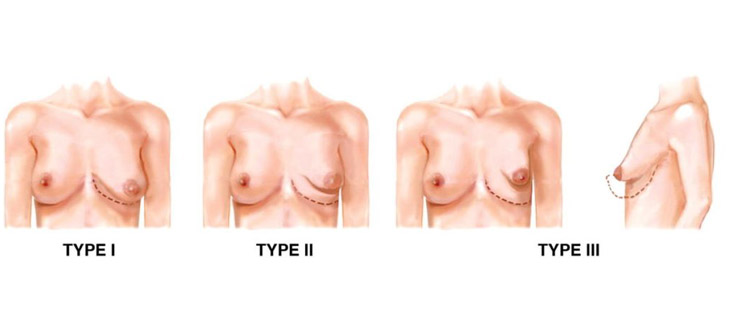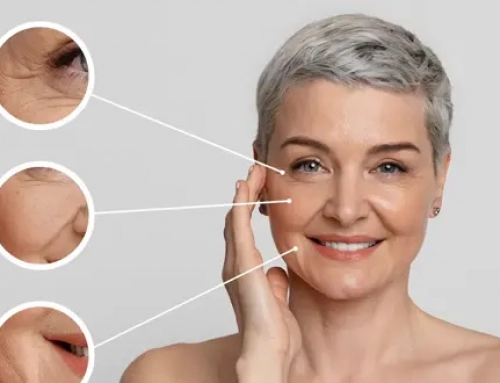
Treating tuberous breasts
Tuberous breasts result from a breast growth disorder during adolescence. Tuberous breasts can be surgically treated at the end of the growth phase (at the age of approximately 17). However, there are different stages with this condition affecting the breasts.
About tuberous breasts
Breasts are called tuberous when they have a cylindrical shape. Tuberous breasts are often hypoplastic and their base is abnormally decreased. Tuberous breast growth occurs solely forwardly, which is why their shape is distorted. The infra-mammary fold points upwards, which accentuates the abnormal shape of the breasts. The areolas are oversized compared to the rest of the breasts, they are curved and pointing downwards.
In half the cases of tuberous breasts, glandular tissue herniates against the areola. In 75% of the cases, breasts are also asymmetric : the breasts do not have the same volume and / or shape.
Tuberous breasts : different severities
Stage 1
Only the inner lower part of the breast is malformed. The areola points downwards and towards the inside of the chest. In that case, a simple mammaplasty can treat the issue. The surgeon will perform a single vertical incision in the majority of the cases. Less frequently, a T shaped incision will be necessary.
Stage 2
The whole lower part of the breast is affected (inner and outer segments). The lower half of the breast is completely or almost completely missing. The areola is pointing downwards and breast growth only occurs in the upper part of the breast. In this case; the surgeon will perform breast augmentation with implants. This procedure is achieved through 2 incisions : a vertical incision and an incision around the areola.
Stage 3
The whole breast is malformed. The breast base is narrowed and breasts only grow forward. Typically, stage 3 tuberous breasts are hypoplastic. The surgeon will work on glandular tissue and with implants. Two incisions are necessary for this procedure : a vertical incision and an incision along the border of the areola.





